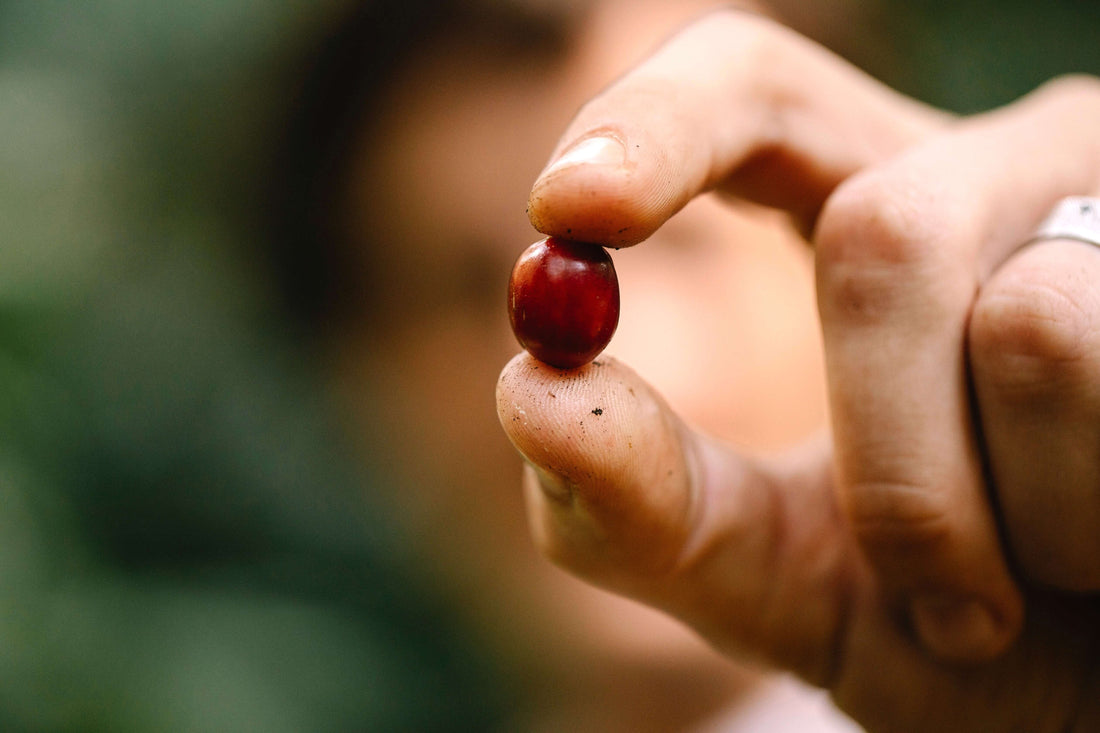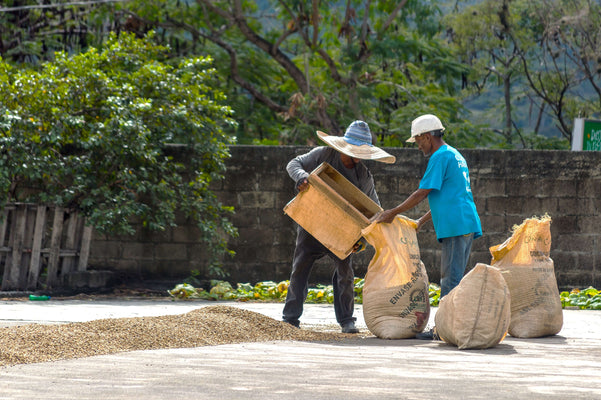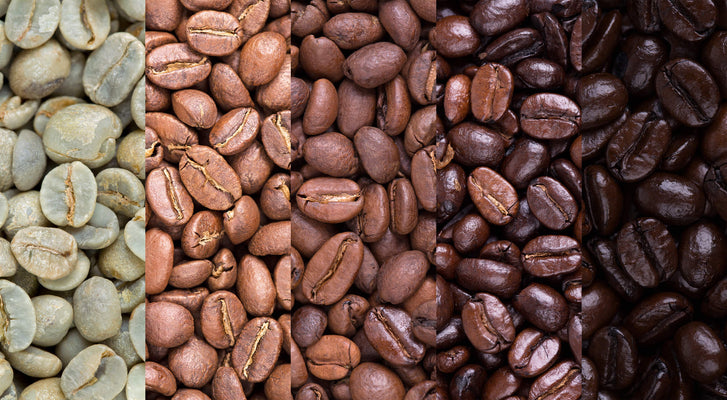
Coffee Harvesting
tai attitude5 min read
The coffee we love is indeed the fruit of the labour of fellow coffee farmers.
In this article, let's have a closer look at an important chapter in coffee's journey: the harvesting of coffee.
How long does it take to grow?
It takes 2 to 4 years to fully grow a coffee plant to maturity. Once a coffee plant reaches maturity, in the years to come, it will produce white flowers once or twice annually.
The blooming period lasts for only about a week, allowing pollination to occur. This period is when the coffee farm is flowing with gentle, flowery scents.
Pollination occurs when the pollen from a flower fall into another flower, allowing fertilisation in order to produce fruit.
Pollination by the wind or insects such as bees is known as natural pollination.
Pollination by humans is known as hand pollination.
Depending on the growing conditions, natural pollination can be difficult; if this is the case, farmers will do hand pollination for their crop. Hand pollination increases the chance of fertilisation, which increases the yield of coffee fruit significantly.
Arabica species can self-pollinate, which means pollen from flowers of the same coffee plant can result in fertilisation. Due to its ability to self-pollinate, Arabica is often grown with more spacing between plants.
Robusta species are incapable of self-pollination, where fertilisation can only occur among different plants; this is also known as cross-pollination. This is why robusta is typically grown with smaller spacing between plants to increase the chance of fertilisation.
Learn more about Arabica and Robusta.
Once a flower receives pollen, fertilisation will happen. For the next 7 to 10 months (9 to 11 months for Robusta species), the coffee plant will start to bear fruit on its branch, starting green and slowly turning ripe to red or other colours depending on cultivar.
When coffee fruit is fully ripe, it is harvesting season. There are two main methods for coffee harvesting: selective harvesting and strip harvesting.
Selective harvesting
Selective harvesting is where farmers manually pick the ripe coffee fruits during harvesting; this is also known as hand-picking.
During harvest season, not all the fruits on the coffee plant ripen at the same rate; selective harvesting ensures pickers check the ripeness of fruits on a daily or weekly basis and only pick the ripe fruit.
Pickers go to the farm to pick only the ripe fruits, fill up their containers, bring them back to the station, perform a post-harvest sorting, and weigh their haul. Pickers are paid by weight.
Selective harvesting depends on the scale of the farm, its terrain, and the available manpower. Hence, selective harvesting is often used best on coffee farms in shade-grown terrain or in inclining volcanic regions, where manpower is also not an issue.
Harvesting all ripened coffee fruit via selective harvesting can take roughly one to two months.
 Selective harvesting is the traditional way of harvesting coffee.
Selective harvesting is the traditional way of harvesting coffee.
Overall, because selective harvesting ensures uniform maturity of coffee fruits, it remains the best way to harvest quality, albeit at the cost of being labour-intensive and time-consuming.
The downside is that the consumer has to pay more for the coffee. The consumer does get higher quality by paying more, hence the extra income for farmers; this is not a downside for those who see it this way.
Strip Harvesting
Strip harvesting is where harvesting is done either via mechanical stripping or via a mechanical harvester.
Mechanical stripping is where a Derricadeira is used to strip the coffee fruit off its branches, with the fruit landing on a canvas placed on the ground. The fruits collected are then brought back to the station, where they perform post-harvest sorting and weigh their haul.
During harvest season, farmers will wait for approximately 75–90% of the overall coffee plant’s fruit to reach ripeness, then proceed to harvest with mechanical stripping.
The mechanical stripping method can be used on farms of any scale or terrain, should the farmer decide to do so. It requires labour to do the job, but it is less time-consuming.
Harvesting all coffee fruit via mechanical stripping can be done in weeks.
 Mechanical stripping, where a Derricadeira powered by petrol is used for harvesting. Image credit: Brudden
Mechanical stripping, where a Derricadeira powered by petrol is used for harvesting. Image credit: Brudden
Overall, harvesting coffee fruit via mechanical stripping is beneficial on the timing side.
The downside is that unripe, ripe, and defective coffee fruit will all be stripped down and collectively harvested.
A mechanical harvester is a piece of machinery that uses vibration on the coffee plant to strip its coffee fruit off its branches. The coffee fruits are collected on the collection unit. The fruits are then brought back to the station, where they perform post-harvest sorting and weigh their haul.
During harvest season, farmers will wait for approximately 75–90% of the overall coffee plant’s fruit to reach ripeness, then proceed to harvest with a mechanical harvester.
Mechanical harvesting is much quicker and replaces labour, as two people are sufficient to do the harvesting task. It is very suitable to be used on larger farms for high production.
Harvesting all coffee fruit via a mechanical harvester can be done within days.
 A mechanical harvester and a collection unit are operated by two people for large-scale harvesting.
A mechanical harvester and a collection unit are operated by two people for large-scale harvesting.
Overall, mechanical harvesting is beneficial on the timing side, and large-scale production becomes possible.
The downsides of mechanical harvesting are that the machinery can only operate on farms with sun-grown terrain, it does not provide extra job opportunities for more farmers, and it harvests unripe, ripe, and defective coffee fruits collectively all at once.
Learn more about shade-grown and sun-grown terrain.
In general, for coffee farms that utilise strip harvesting, producing high-quality coffee is possible with the additional investment of using optical sorters at the station to sort out the unripe and defective coffee fruits.
Extra information
Coffee harvesting is very weather-dependent, which could impact quality, price, and sustainability.
The ripe coffee fruit has a higher carbohydrate and sugar content. During coffee roasting, carbohydrates and sugar are mainly responsible for turning the green coffee bean to brown, transforming it into delicious aromas and flavours that we enjoy.
Unripe green coffee beans have insufficient carbohydrates or sugar content to begin with; roasting such beans will turn them a yellowish-brown colour, which contributes bitterness, greenishness, and astringency, therefore inferior quality in the cup.
By removing unripe and defective coffee fruits during the harvest or post-harvest, both selective harvesting and strip harvesting can greatly help pave the way to producing high-quality coffee.



